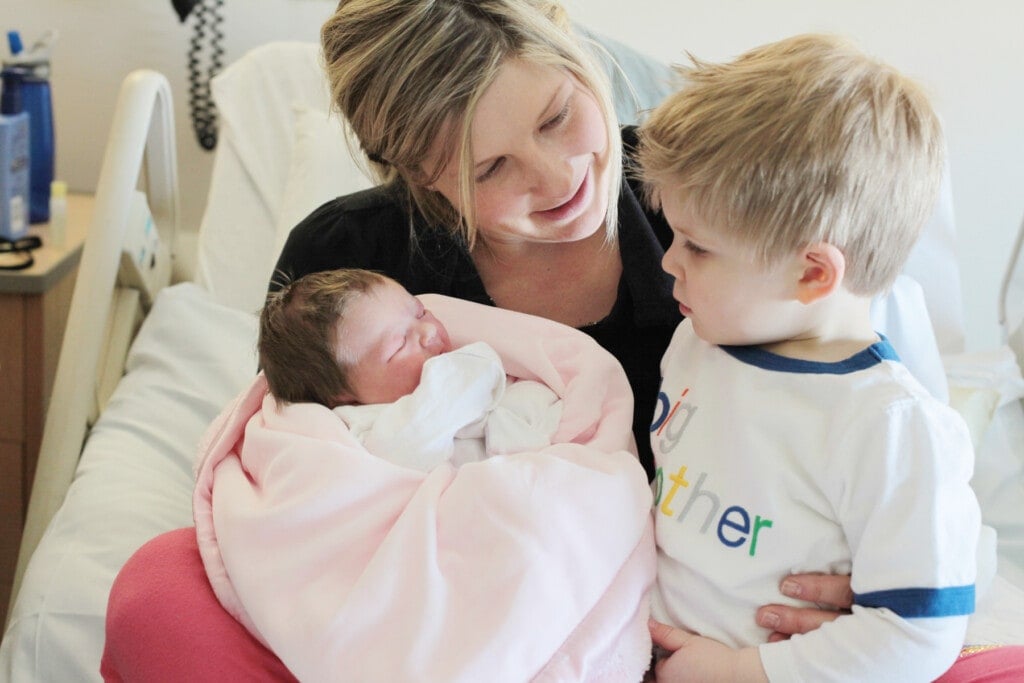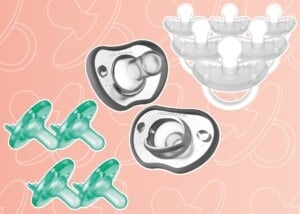Being pregnant and then delivering your first child is beautiful, unlike anything else in the world. You experience new feelings, emotions, and sensations during your first pregnancy daily. When it comes time to deliver that first child, you can get swept away by the wave of emotion and change that occurs in mere minutes. In a flash, your world turns upside down in the best way.
During your second pregnancy, you may feel familiar aches and pains and familiar feelings of impending change. When it’s “go” time, you somewhat know what to expect and have a better idea of the roller coaster speeding faster than you can process. There may be many differences between your first and second (or more) pregnancies, but one significant difference is that after your first, you have a mini human—or more than one—waiting for you when you get home from the hospital.
Being Postpartum Again Brings New Stress
Women I spoke to said regardless of how old your first child is, being postpartum again is a new type of stress. You are trying to focus on healing from labor and delivery and are likely sleep-deprived from your newborn’s needs. Now, you must factor in the stress and exhaustion of trying to keep up with your first child and ensure you meet their emotional and physical needs. Trying to split your attention and time and learning that it’s physically impossible to be in two places at once can be emotionally draining.
There’s Less Down Time to Spend Healing
You also get less “free time” to heal after the second labor and delivery. With your first child, you could sometimes heed the oft-given advice of “sleep when the baby sleeps.” With round two, you could get your newborn down for a nap and still have a wiggly toddler waiting to command your full attention. Meanwhile, you could use a hot shower, a meal, and have about 12 loads of laundry piled up in the corner of your bedroom. When you attempt to tackle one of those items on your mental to-do list, the baby is up and ready to eat again.
There’s a Desire for Their Partner to Help Even More
Another common theme from the women I polled about being postpartum again was the need for their partners to understand what role they must play once baby No. 2 arrives. Many women said they asked their partners to shoulder more of the load with their older child so they could focus on healing and figuring out the feeding schedule for the baby. When breastfeeding, this becomes even more helpful as they figure out positioning and latching with the newborn. Despite your sleep-deprived mind, remember that neither you nor your partner is a mind-reader, so open and clear communication is best.
Make Plans to Keep Older Child Entertained
Many women spoke of planning and having a stash of new (think dollar store) items to occupy their older child once the new baby arrives and they are figuring out their new normal being postpartum again. Newborns feed almost constantly when they first get home, so having a supply of easy-to-reach activities to entertain your older child on demand is clutch. You can also get grocery delivery to ensure you have all the snacks on hand and don’t be afraid to use screen time.
Be kind to yourself, and remember this is temporary. Your kids will be fine with a few extra episodes of Miss Rachel and all the snacks they can stomach. Invest in a good baby carrier so your hands are free and you can do as much as possible while still providing that safe cocoon for your newborn.
Carving out special one-on-one time with your older child, even if it’s just 10 minutes a day, will do wonders for your mental health. Making them feel special and “seen” will have a positive effect, giving you a few minutes away from the vortex of Babyville. Recharge with each other and spend a few precious minutes a day connecting.
Have Your Older Child Be Involved in Helping
Some mothers feel that involving their older child with the new baby is the ticket when they were postpartum again. Of course, this depends on the age gap between your children, but if your older child is interested and able, try involving them so they feel important and helpful. Asking your child to help you change the baby by bringing you a diaper or having them show your newborn a special stuffed animal or toy can strengthen the bond between siblings while also showing your older child they are a part of the process.
There is a lot of change happening at once, and no matter how small your kids are, they’ll pick up on the shift. Involving them helps remind your child they are still a valued family member. One mom also shared a simple tip that is so effective. She made a point to tell the new baby to “wait” while she tended to her older child to show it goes both ways. That makes sense, right?
Keep Your Older Child on a Schedule
Another way to keep your sanity once you come home with baby No. 2 is to keep your firstborn on as much of a schedule as possible. If your older child goes to daycare, consider still sending them even though you are home. This allows you to figure out your new routine with the baby and even rest and recover when you can. Your older child will be in the same routine with their teachers and friends and come home excited to see you at the end of the day. It’s a win-win!
Most mothers said being postpartum again with their second child’s arrival feels familiar and easier since they have been there before and mostly know what to do and expect. However, there was near agreement that, logistically, the challenges increase since you are now responsible for multiple little ones, which means extra prep and extra coordinating. Prepping as much as you can the night before will save your sanity and your time. And allowing help as much as offered will be your ticket to success. If you find yourself in need, reach out to your healthcare provider. This time is fleeting and precious and, yes, oh-so-hard. Surround yourself with all the support you can and soak up these moments with your growing family.













